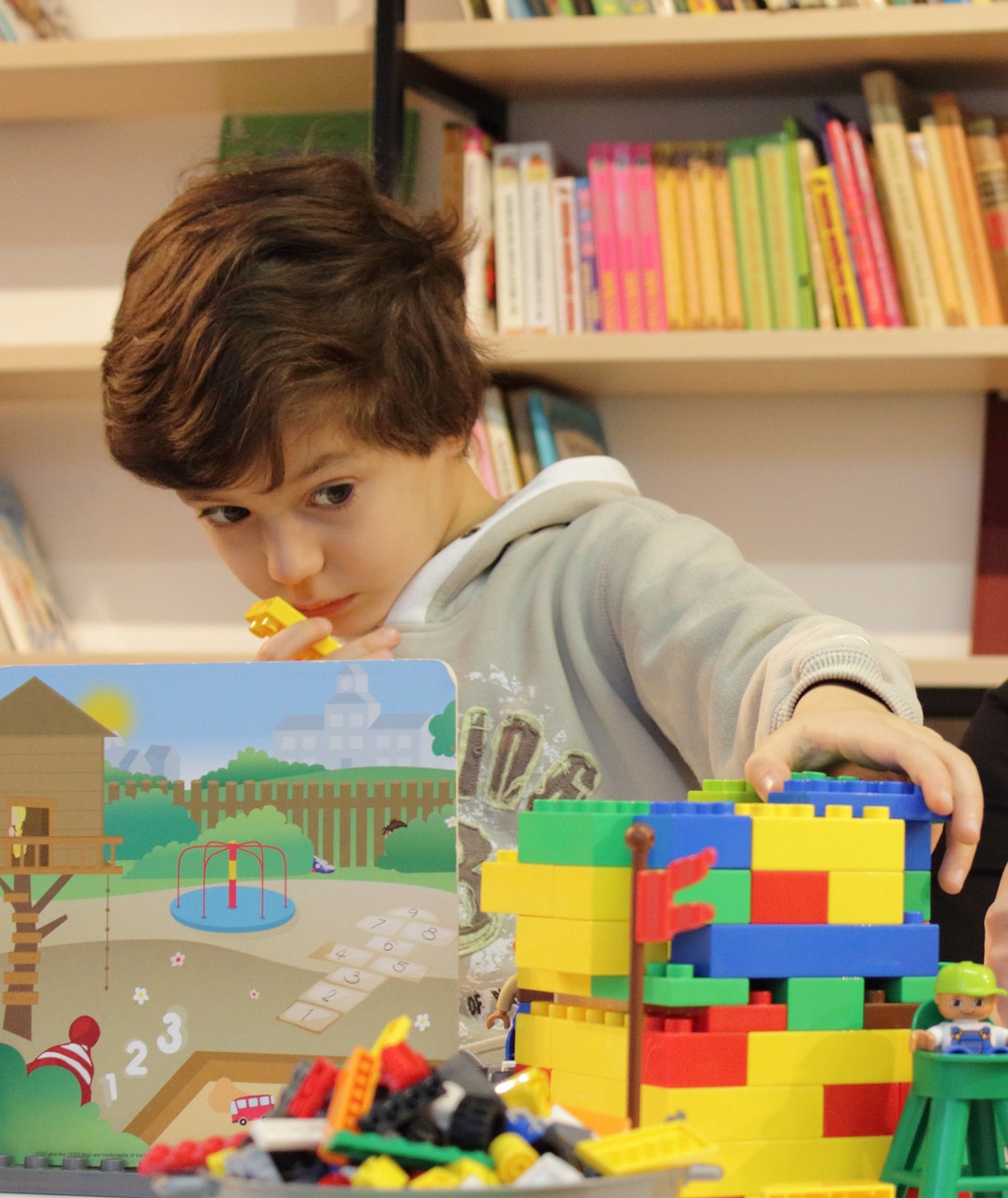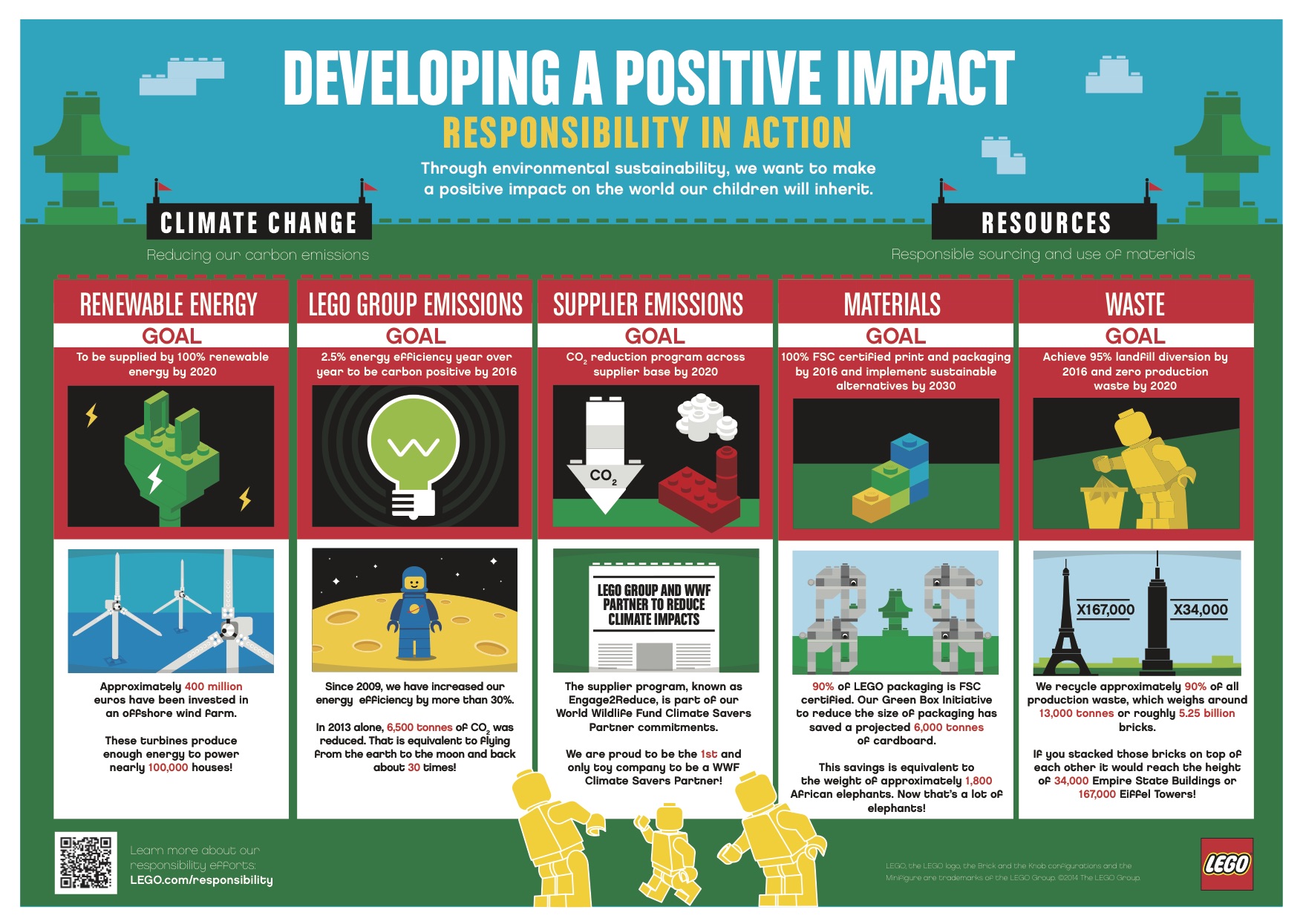
Now more than ever, it is important to support companies embracing green energy. With the US withdrawal from the Paris Climate Accord, citizens have a powerful choice to support what the Trump administration does not. We can act on climate change through our consumption in this capitalist economy. It’s what drives change.
One toy company leading the way towards green energy is Lego. Lego is being applauded for reaching its sustainability goal of 100% renewable energy manufacturing three years ahead of schedule. But don’t get too excited yet…Legos are still made from “other plastics” that are difficult to recycle and made from raw oil-based materials.((https://www.lego.com/en-us/aboutus/responsibility/environmental-leadership)) Legos are great toys admittedly. They are one of the few plastic toys I have ever purchased for my children.
Despite sustainability issues involving Legos’ source materials, the renewable energy milestone is impressive. According to the official press release:
Since 2012, the LEGO Group has supported the development of more than 160 megawatts of renewable energy. The latest investment is a 25% stake in the Burbo Bank Extension wind farm off the coast of Liverpool, UK. The wind farm, which was officially opened today, will generate clean power for more than 230,000 British households.
“We work to leave a positive impact on the planet and I am truly excited about the inauguration of the Burbo Bank Extension wind farm. This development means we have now reached the 100% renewable energy milestone three years ahead of target. Together with our partners, we intend to continue investing in renewable energy to help create a better future for the builders of tomorrow,” said Bali Padda, CEO of the LEGO Group.((https://www.lego.com/en-gb/aboutus/news-room/2017/may/100-percent-renewable-milestone))

Lego has achieved their renewable energy goals ahead of schedule by investing in two offshore wind farms. In addition:
20,000 solar panels will be installed on the roof of the LEGO® factory in Jiaxing, China. The panels will produce almost six gigawatts of energy per year. This is equivalent to the electricity use of more than 6,000 Chinese households. ((https://www.lego.com/en-gb/aboutus/news-room/2017/may/100-percent-renewable-milestone))
Another sustainability issue Lego faces, in my experience, is endurability. The company has shifted from the open-ended creativity bricks of my youth to kits with directions tied to commercial movies, tv shows, etc. This shift to kit-based building means that once the kit is built, it is rarely taken apart and rebuilt. Instead, random Legos end up in baskets or boxes. The dependence on directions and kits limits many kids imagination with what to do once the set is complete. And yes, Legos still hurt when you step on them.
Officially, Lego recommends you donate your unwanted bricks.((https://www.lego.com/en-US/service/help-topics/fun-for-fans/behind-the-scenes/our-company/recycling-bricks)) They are aware of the issues surrounding their source material and have made it one of their two “strategic priorities”.
- Reducing CO2 emissions: It is our aim to reduce our own and our suppliers’ CO2 emissions and to build 100% renewable energy capacity. We work closely with the World Wildlife Fund (WWF) in setting ambitious targets to reduce CO2 emissions through improving our energy efficiency, and we have invested in an offshore wind farm to produce renewable energy to balance our global energy use.
- Responsible resources: We want to innovate our sourcing and use of materials. We have therefore made a commitment to find and implement sustainable alternatives to our current oil-based raw materials by 2030 and to use sustainable packaging for all LEGO®products, while also aiming to improve our waste management.((https://www.lego.com/en-us/aboutus/responsibility/environmental-leadership))
Since they have reached the first priority ahead of schedule, maybe the company will focus more on the second goal. I commend Legos for being very transparent about their CO2 emissions and source materials. We must act in our support of the Paris Climate Accord by supporting companies making clean energy choices voluntarily.
Image credit: klimkin / Pixabay
Leave a Reply